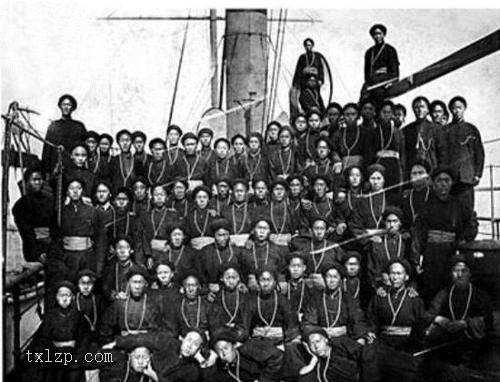[Fuxi Nvwa Image Page]
Fuxi Nvwa Image Page, Tang Dynasty, silk edition, color setting, vertical left 222.5 cm, right 231 cm, horizontal upper 115 cm, lower 94 cm
In this picture, two men and women are painted with human head and snake body. They are both wearing narrow shirts and small sleeves with crimson moustaches. They are connected by the waist and share a white skirt. The man is on the left. He doesn’t need to. He wears a cage crown on his head, and his left hand is upright. There is an ink fountain on his left hand (corroded). The woman lives on the right, wears a high bun, and holds the rules with her right hand. The upper body of the men and women embrace each other, the middle arms are connected, and the lower tail curve intersects four sections into a spiral shape. There are round wheels on the heads of the two people, and a circle is drawn around them to symbolize the day; There is a crescent moon under the tail, and a circle is drawn around it to symbolize the moon. The picture is surrounded by circles of equal size, some of which are connected by lines to symbolize the stars
Many silk paintings of Fu Xi and Nu Wa were unearthed from the tombs from the Gaochang State of Turpan to the Xizhou State of the Tang Dynasty. The forms of the paintings are roughly similar: human head and snake body, embracing each other, Fu Xi holding the moment, and Nu Wa holding the rule. The silk painting has the sun on the top and the moon on the bottom, and is surrounded by stars connected by threads. The whole silk painting is wide at the top and narrow at the bottom, which is similar to the shape of the coffin. It is often covered on the coffin, covered on the corpse or placed beside the corpse, and hung or fixed on the top of the tomb with wooden nails
The Fuxi Nuwa silk paintings in the Palace Museum were unearthed in the ancient tomb of Astana, Turpan, Xinjiang in April 1963, and were allocated to the Palace Museum by the Xinjiang Museum in December 1963. According to the archaeological report of the ancient tomb of Astana, there were ten such silk paintings unearthed in the same period. In the tomb chamber, the picture is usually facing down and nailed on the top of the tomb with wooden nails. It is generally believed that Fu Xi’s rules are like land expropriation, and Nu Wa’s rules symbolize the sky, which is used to match the sun, moon and stars on the picture and create a small universe for the tomb.
![图片[1]-Fuxi Nuwa Image Page-China Archive](https://chinaarchive.net/Tang dynasty/painting/20214[1024].jpg)



![[Qing Dynasty] British female painter—Elizabeth Keith, using woodblock prints to record China from the late Qing Dynasty to the early Republic of China—1915-China Archive](https://chinaarchive.net/wp-content/uploads/2022/11/image-191x300.png)

